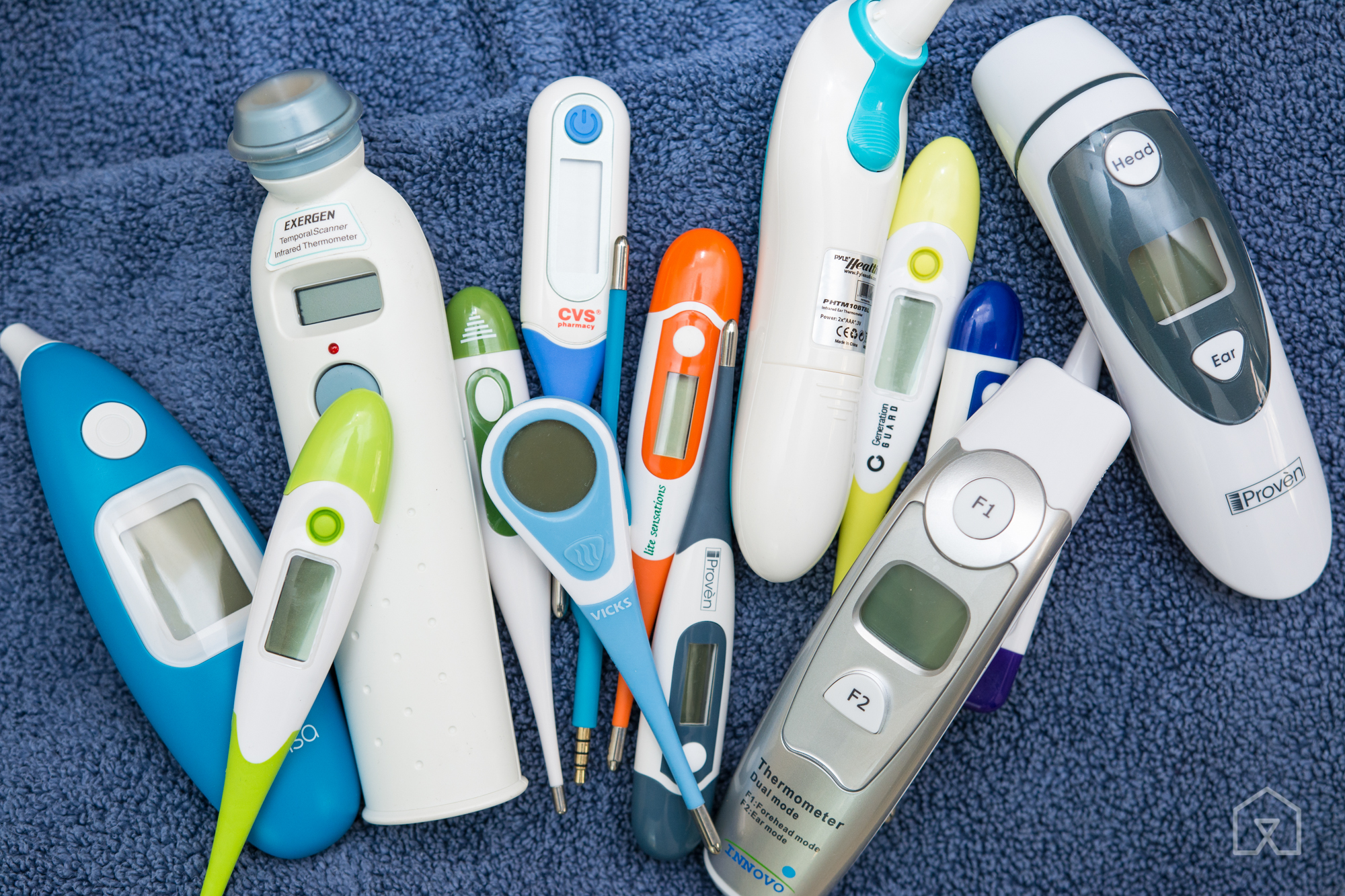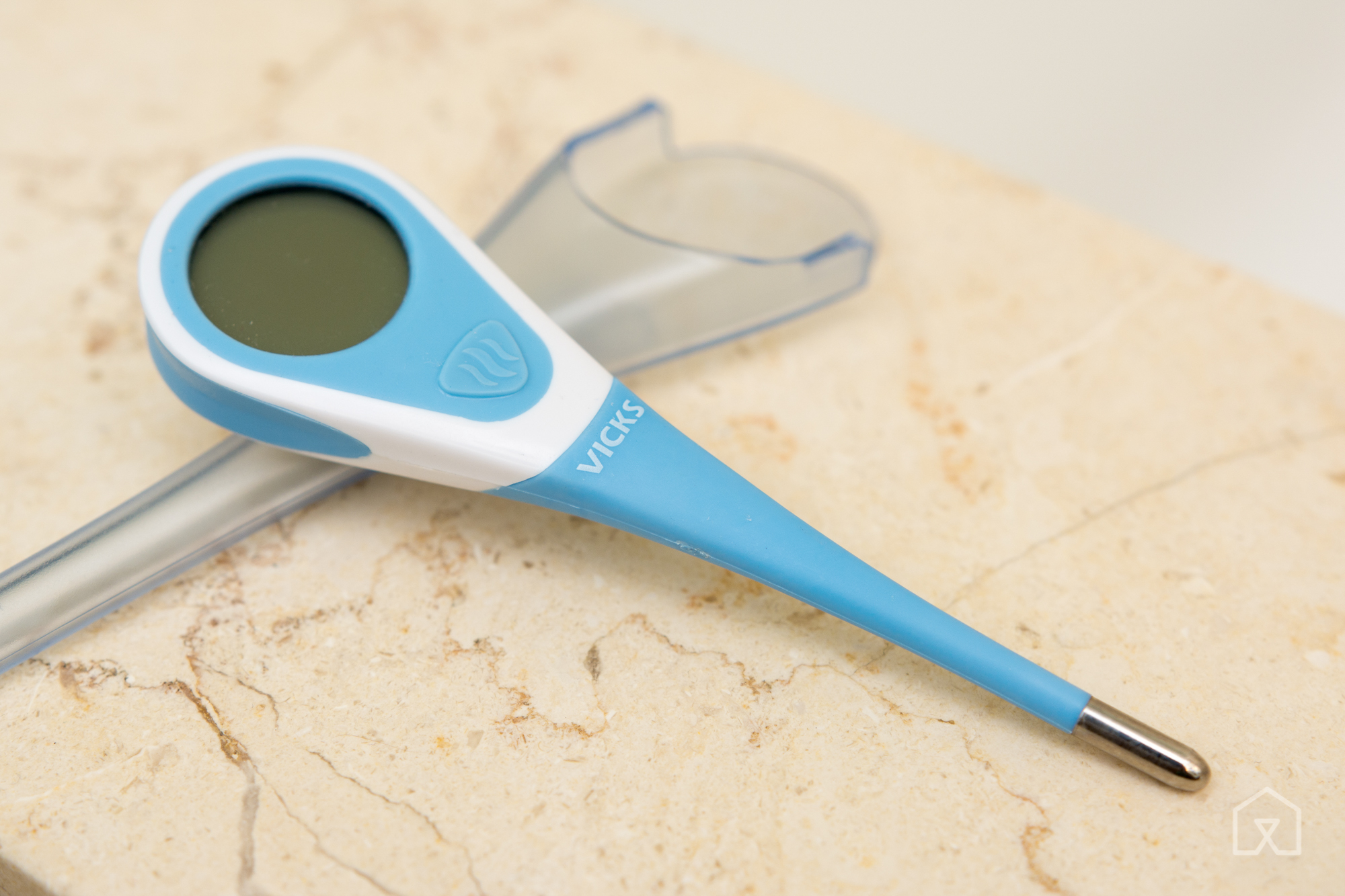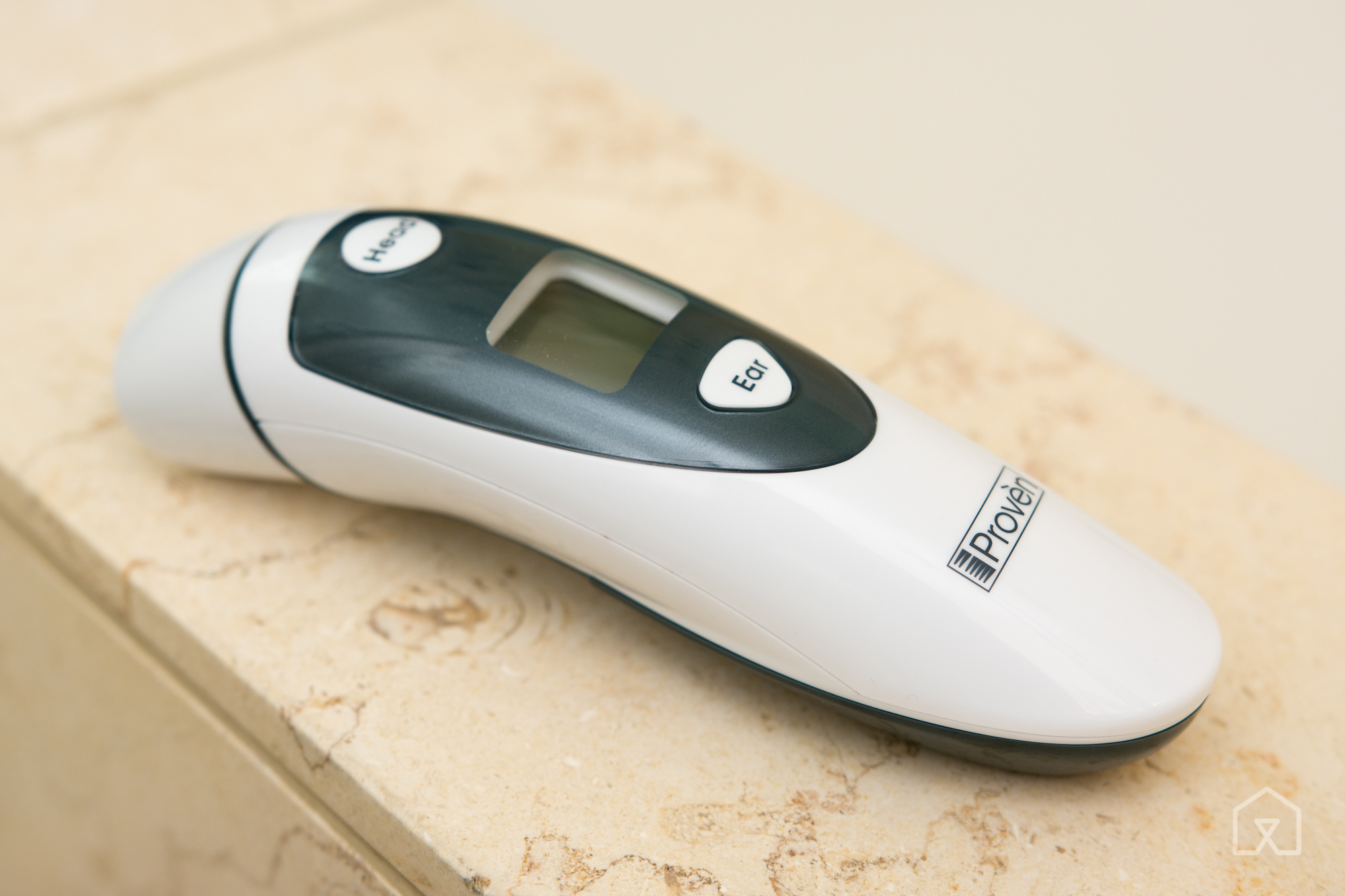How we picked and tested

A handful of the thermometers we tested to find the best. Photo: Michael Hession
Digital thermometers have made difficult-to-read mercury thermometers obsolete. They come in several formats—the key is to find a user-friendly thermometer that offers accurate and consistent readings with the least amount of discomfort.
Oral temperature taking is probably the most common for at-home use and is still the standard in many doctor’s offices. These stick thermometers are simple and offer reliable measurements and fast results, but you do need to keep your mouth closed around the device. This is tough for most toddlers and preschoolers, so they are recommended for anyone age 5 and up. Oral thermometers today usually pull triple duty as axillary (armpit) and rectal thermometers as well. We opted to focus on these multipurpose thermometers rather than ones that offer only one option—where you decide to put it is up to you. In addition to oral thermometers, you can now get affordable ear and forehead models for use at home, and we considered all of these models in our research. For more on thermometer varieties, see our full guide.
Our requirements for a thermometer were simple: something fast, accurate, and easy to read that doesn’t require putting on glasses. Once we knew which categories we wanted to look at, we chose thermometers based on customer ratings and best-selling items on Amazon, and those suggested by major product-review sites like Consumer Reports, Thoroughly Reviewed, and Parenting.com. Then we narrowed things down by considering the features like backlit displays, or color-coded systems that flash to indicate whether a temperature is normal, a low-grade fever, or a high-grade fever. We also looked for devices that were easy to clean, rather than ones that require disposable protective caps or sleeves.
Our writer tested each thermometer five times on herself (a healthy adult with no fever) and compared those at-home results with readings from a Welch Allyn Spot Vital Signs LXi (PDF), the thermometer used in urgent-care clinics in New York City. In addition, we called in a senior tester to judge how easy thermometers were to use.
We looked at how close the measurements we got at home were to the professional thermometer and how long it took to give final measurement. Although the ear and forehead thermometers all gave results in less than three seconds, operating time for oral thermometers ranged from 8 seconds to an excruciating high of 60 seconds. A minute may not seem like a long period of time, but it is when you’re sitting around with a stick of plastic under your tongue.
To find out how a forehead thermometer worked in the outside world, we tested one on a healthy person sitting in the sun. The reading came back as 103.8 ºF—a lesson in both thermometer use and the need to sit in the shade. You can follow all of the instructions (wipe off sweat, wait after exercise), but the environment around you is still going to influence your skin temperature. In the end though, almost all of the thermometers tested gave readings consistent with the professional-grade thermometer. The real deciding factor here is the features.
Our pick (oral/rectal/axillary)

For the oral/rectal/axillary thermometer, we recommend the Vicks Comfort Flex Digital, which stands out in speed and style. The average measurement time of 8 seconds was the fastest tested—beating our runner-up by 3 seconds and the slowest thermometer tested by more than 50 seconds. The backlit, large display was by far the easiest to read and interpret. Plus, it was the only model we tested that comes with a useful, color-coded fever indicator.
Half of the thermometers we tested had small numbers in a display window roughly 0.75 by 0.2 inch. The Vicks featured numbers twice the size of the next largest display and was the only thermometer with a backlight feature—a must have for anyone who shuns the light when sick or anyone taking a child’s temperature in the dark.
The Vicks was also the only thermometer with a useful fever indicator. The Vicks thermometer color codes your temperature results, turning green for a normal temperature, yellow to indicate a slightly elevated temperature above 99 ºF, and red to alert you to a fever greater than 101 ºF.
Our pick (forehead and ear)

Our top pick for the forehead and ear is the iProven DMT-489 thermometer. Other excellent choices for exclusive forehead or ear thermometer designs exist, which we highlight in our full guide, but the dual-function capability of the iProven makes it the standout choice. Even if you don’t plan on using both functions, it’s nice to have the option. The iProven switches easily between the two functions and features a clear, backlit, color-coded display. Although we were skeptical about the forehead reading’s accuracy, when taken in a room-temperature environment the readings given were consistently within 0.2 ºF of the ear temperature reading and within 0.4 ºF of the professional-grade measurement.
Smart thermometers and a silent forehead thermometer
Read our full guide for our recommended picks for an intuitive smart ear thermometer, a smart oral thermometer with a big flaw, and a totally silent forehead thermometer.
This guide may have been updated by The Sweethome. To see the current recommendation, please go here.
Note from The Sweethome: When readers choose to buy our independently chosen editorial picks, we may earn affiliate commissions that support our work.




